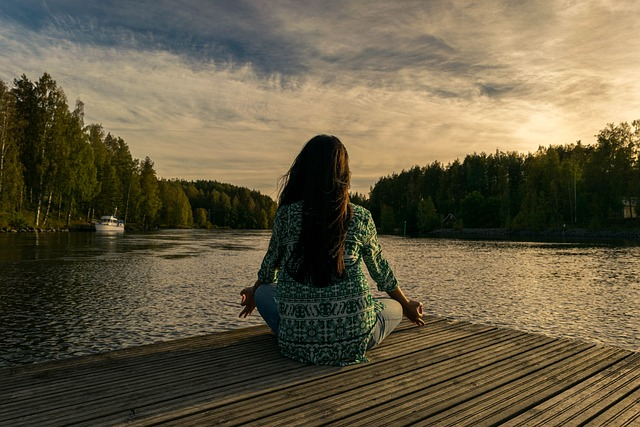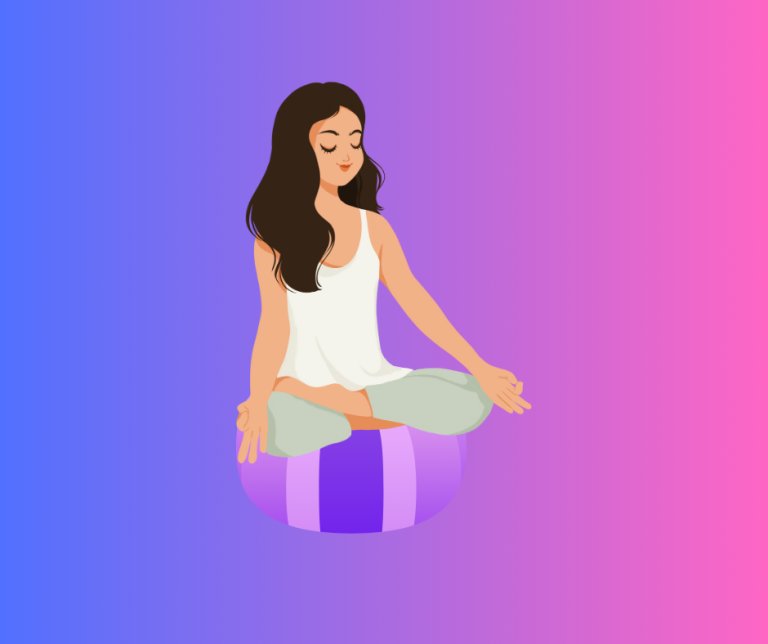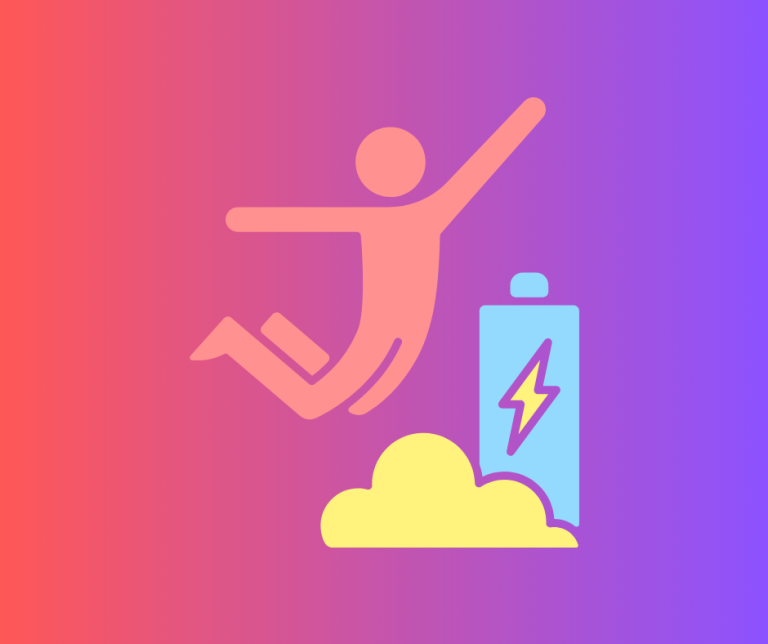Sun Gazing: 3 easy Steps to Harnessing the Power of the Sun for Enhanced Well-being
Ever stumbled upon an ancient practice that promises the energy of a double espresso and the serenity of a spa day? No, it’s not some secret potion or a magic spell. It’s sun gazing!
Dating back thousands of years, sun gazing has been the go-to ritual for various civilizations. From the Mayans to the ancient Egyptians, this practice has been a cornerstone of spiritual and physical well-being.
Picture this: a simple act that not only aligns your circadian rhythm but also boosts your mood, reduces stress, and even suppresses that pesky appetite. Sounds too good to be true? Stick around.
Let’s embark on a journey to uncover the mysteries of sun gazing, learn the safe way to do it, and explore its myriad benefits.
What is Sun Gazing?

Sun gazing, in its essence, is a meditation technique. But it’s not your typical “sit down, close your eyes, and hum” kind of meditation. It involves directly gazing at the sun during those golden hours of sunrise or sunset. Think of it as soaking in the sun, but with your eyes. And just like sunbathing can give you a tan, sun gazing, when done right, can offer a plethora of benefits. But more on that in a bit.
Reasons You Need to Know About Sun Gazing
Alright, let’s get down to brass tacks. Why should Joe and Jane from down the street care about sun gazing?
Realigning Circadian Rhythm: Our bodies operate on an internal clock, known as the circadian rhythm. This rhythm affects everything from our sleep patterns to our mood and even our metabolism. In today’s digital age, with screens galore and artificial lighting, our natural sleep-wake cycle can get thrown off balance.
Sun gazing, especially during the golden hours of sunrise or sunset, can help recalibrate this internal clock. By syncing with the natural light-dark cycle, you can potentially improve sleep quality, boost daytime energy, and even enhance cognitive function.
Boosting Mood and Reducing Stress: The sun isn’t just a giant ball of fire; it’s a source of life and energy.
Exposure to natural sunlight increases the production of serotonin in the brain, often referred to as the “feel-good” hormone.
Regular sun gazing can potentially elevate mood, reduce feelings of anxiety, and combat seasonal affective disorder (SAD). It’s like nature’s very own mood enhancer, without any side effects.
Potential Appetite Suppression: This one’s intriguing. Some sun gazers have reported a noticeable reduction in appetite after consistent practice.
While the exact science behind this is still a topic of research, some theories suggest that sun gazing might influence the pineal gland, which plays a role in hunger regulation.
If you’re looking for a natural way to curb those snack cravings, sun gazing might just be the ticket.
Enhancing Energy Levels: Feeling sluggish in the morning? Instead of reaching for that third cup of coffee, consider sun gazing. The sun’s energy is potent, and by gazing at it, you’re tapping into a natural source of vitality. It’s akin to photosynthesis in plants. While humans can’t convert sunlight into energy directly, sun gazing can invigorate the senses, leading to a feeling of rejuvenation.
Now, while these benefits sound promising, it’s essential to approach sun gazing with knowledge and caution. After all, the sun is powerful, and like all powerful things, it demands respect.
Step-by-Step Instructions to Practice Sun Gazing Safely

Before you dive into the step-by-step practice, we need to know how to look at the sun. I believe that Dr. Andrew Huberman has a great video on this. This video will help give some key information on how to look at the sun and some of the grounded science that makes this whole process beneficial.
This is not woo woo. This process is grounded in lots of studies, and science. If you are curious about this check out the video. Also it is not about staring directly at the sun no matter what. That is a great way to damage your eyes. Listen to your body. You should not feel pain.
Choosing the Right Time
Timing is everything. Just as you wouldn’t water your plants in the scorching midday sun, you shouldn’t practice sun gazing during peak sunlight hours. Aim for sunrise or sunset when the sun plays peek-a-boo with the horizon.
Preparing for the Gaze
Setting the stage is crucial. Find a calm environment, preferably a place where you can feel the earth under your feet. Grass, sand, or even dirt will do. And those fancy sunglasses? Ditch ’em. Let your eyes meet the sun in all its glory.
The Actual Gazing Process
Start small. Rome wasn’t built in a day, and you shouldn’t stare at the sun for hours on your first go. Begin with a few seconds, gradually increasing your gazing time. Remember, it’s a marathon, not a sprint.
Key Considerations For Successfully Sun Gazing

Alright, let’s address the elephant in the room. Is sun gazing safe? Well, like most things in life, it’s about balance. Here are some things to keep in mind:
UV Protection: The sun, in all its glory, emits ultraviolet (UV) rays. While a certain amount of UV exposure is beneficial (hello, vitamin D!), excessive amounts can be harmful, especially to the eyes. When sun gazing, it’s crucial to choose times when the UV index is at its lowest, typically during sunrise or sunset. This minimizes the risk of potential eye damage. And remember, if you ever feel discomfort, it’s a sign to stop.
Know Your Limits: Just as you wouldn’t run a marathon without prior training, you shouldn’t dive headfirst into prolonged sun gazing. Start slow, with short durations, and gradually increase your gazing time as you become more accustomed. Everyone’s tolerance is different, so it’s essential to listen to your body and recognize when you’ve reached your limit.
Consistent Environment: The environment in which you sun gaze can significantly impact your experience. Find a quiet, serene spot where you won’t be disturbed. Natural settings, like a beach or a park, are ideal. The tranquility of nature can enhance the meditative aspect of sun gazing.
Proper Posture: While it might seem trivial, the way you stand or sit during sun gazing can influence its effectiveness. Maintain a relaxed but upright posture. If standing, plant your feet firmly on the ground, preferably barefoot to connect with the earth’s energy. If sitting, ensure your back is straight and you’re comfortable.
Stay Hydrated: Sun gazing can be dehydrating, especially in warmer climates. Ensure you’re well-hydrated before and after the practice. Drinking water can also help flush out any toxins and enhance the overall experience.
Research and Education: Before starting, invest some time in understanding the practice. Read up on sun gazing, watch tutorials, or even attend workshops if available. The more you know, the better equipped you’ll be to practice safely.
Consultation: If you have pre-existing eye conditions or other health concerns, it’s wise to consult with a healthcare professional or an ophthalmologist before starting sun gazing. It’s always better to be safe than sorry.
Remember, sun gazing is a journey of connection — with the sun, with nature, and with oneself. Approach it with respect, patience, and an open heart.
Taking it to the Next Level: Enhancing Your Sun Gazing Experience

Once you’ve got the basics down, why not spice things up a bit?
– Meditation and Intention-Setting:
As you gaze, set an intention or meditate on a thought. Let the sun’s energy amplify your goals.
– Grounding Exercises:
Pair your sun gazing with grounding exercises. Feel the earth, connect with nature, and let the energy flow.
—
Alternatives to Sun Gazing

Not a fan of staring at the sun? No worries. There are other ways to harness the sun’s energy:
– Safe Sun Exposure: Soak in some vitamin D the old-fashioned way. Just remember the sunscreen.
– Light Therapy: Modern problems require modern solutions. Light therapy can offer some of the benefits of sun gazing without the direct sun exposure.
—
Wrapping Up and My Experience With Sun Gazing
Sun gazing is more than just a practice; it’s a journey.
A journey of discovering the power of the sun and harnessing its energy. From realigning circadian rhythms to boosting mood, the benefits are vast.
But remember, it’s not about how long you gaze; it’s about how you gaze. As always stay classy, and if you found this post helpful, check out some of our related posts, or check out our Youtube channel!





